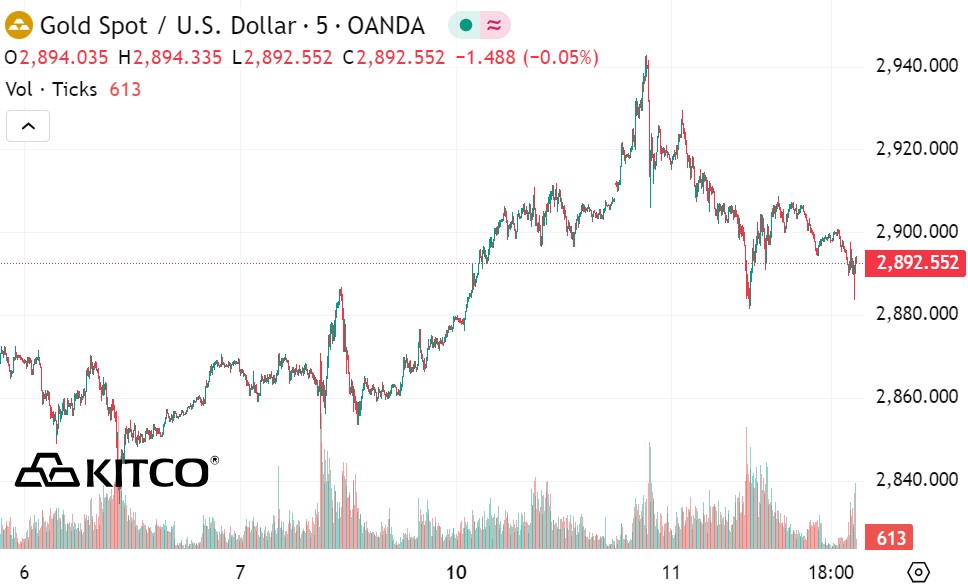Gold prices fell from historic levels as investors assessed congressional testimony from Fed Chairman Jerome Powell and new trade policy statements from US President Donald Trump.
The most-active April gold contract hit a record high of $2,968.50 an ounce before falling further. As of 5:30 p.m. EST, the contract was trading at $2,927.60 an ounce, down $9.20 an ounce from the previous session.
The intraday price action showed considerable volatility, with gold falling to $2,942 an ounce within 20 minutes of peaking. A subsequent nine-hour decline pushed prices to an intraday low of $2,907 an ounce, before recovering slightly by the end of the session.

Market sentiment was largely driven by two key developments. First, President Donald Trump’s announcement on Sunday that he would impose a 25% tariff on imported steel and aluminum, without exceptions or exemptions, has raised concerns about potential trade conflicts.
The protectionist measures are intended to support struggling domestic industries, but also increase the risk of retaliation from trading partners, potentially leading to a broader trade war.
Second, the testimony of Fed Chairman Jerome Powell also had a big impact on market developments. In his opening remarks, Mr. Powell emphasized that the Fed remains cautious about cutting interest rates, citing a strong economy and inflation that has consistently exceeded the Fed's 2% target.
After three interest rate cuts in 2024, the Fed is still maintaining its monetary policy and analysts say it is likely to continue this stance at the Federal Open Market Committee (FOMC) meeting on March 19.
Investors are closely watching Powell’s two-day testimony for clues on upcoming monetary policy, especially with consumer price index (CPI) data due out. If inflation is higher than expected, market expectations for two rate cuts this year could be challenged.
The pullback from record highs also reflects profit-taking after a sharp rally since mid-December, when gold rose about $370, or 14.25%. The pullback suggests investors are taking advantage of the opportunity to lock in profits while reassessing the outlook for monetary policy and trade risks.
A combination of trade concerns, inflationary pressures and geopolitical uncertainty pushed gold prices to record highs. However, the Fed Chairman’s cautious stance on interest rates, coupled with profit-taking pressure, led to a slight decline on the day, reflecting the complexity of factors affecting the precious metals market today.











